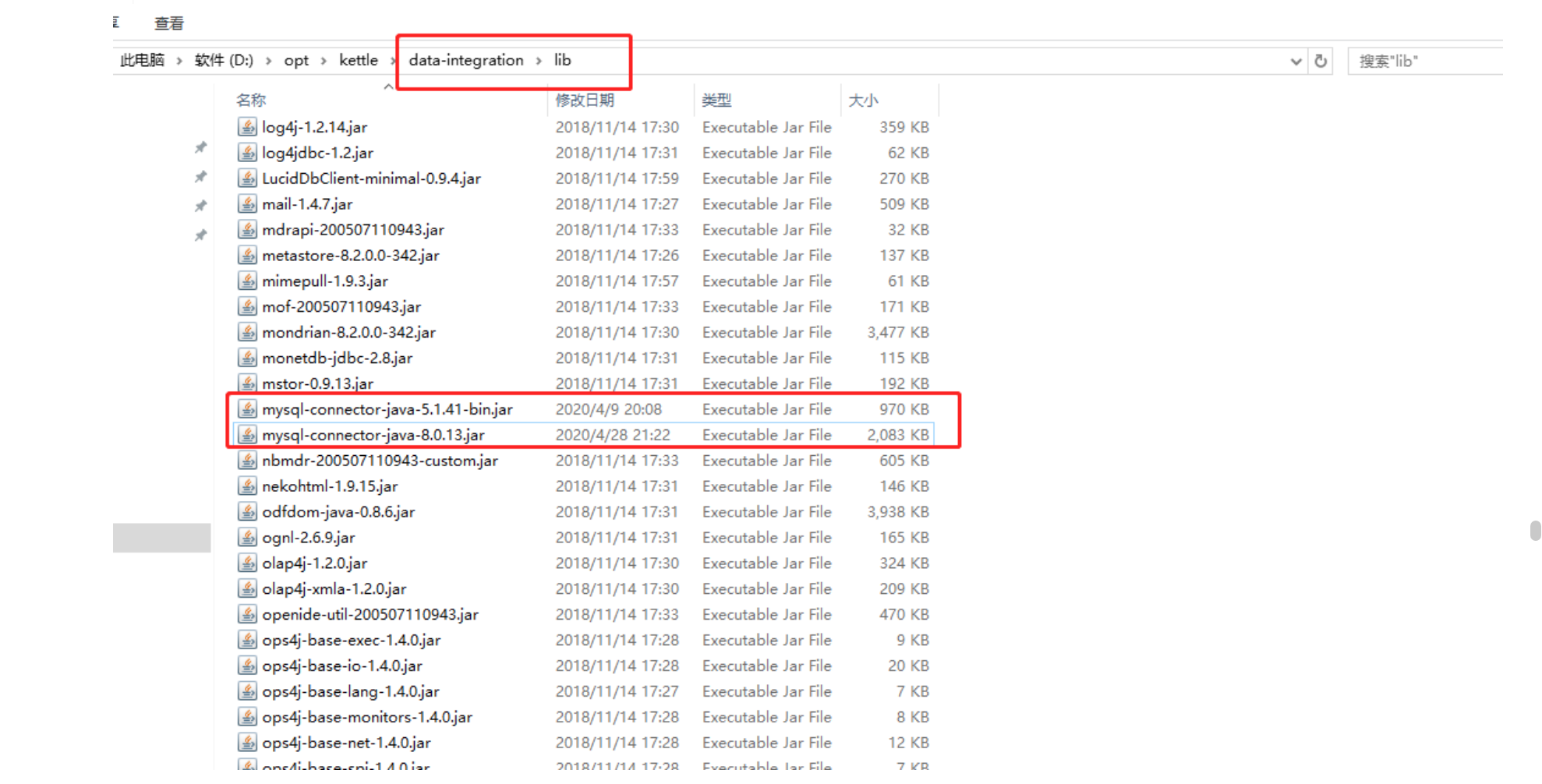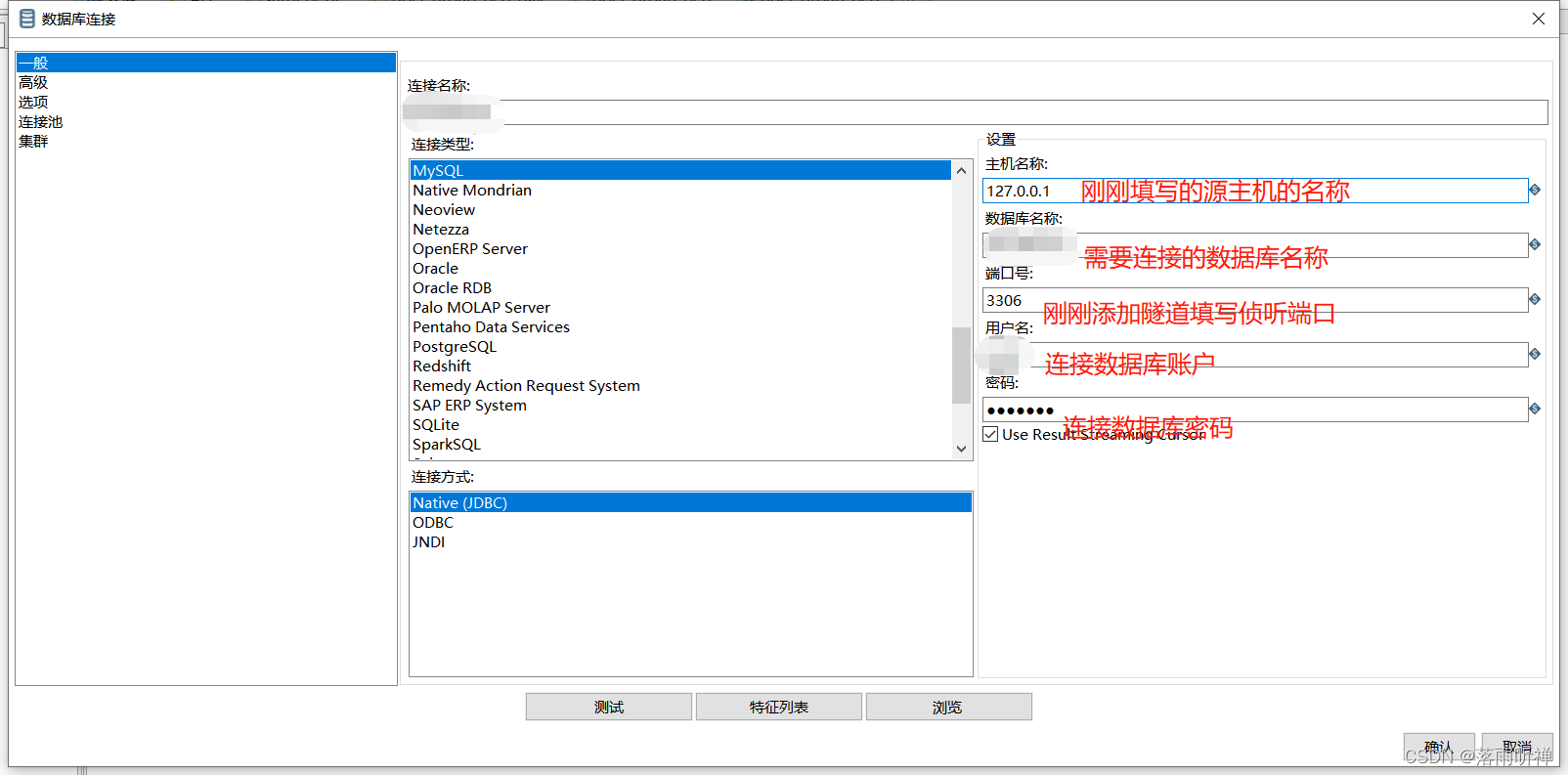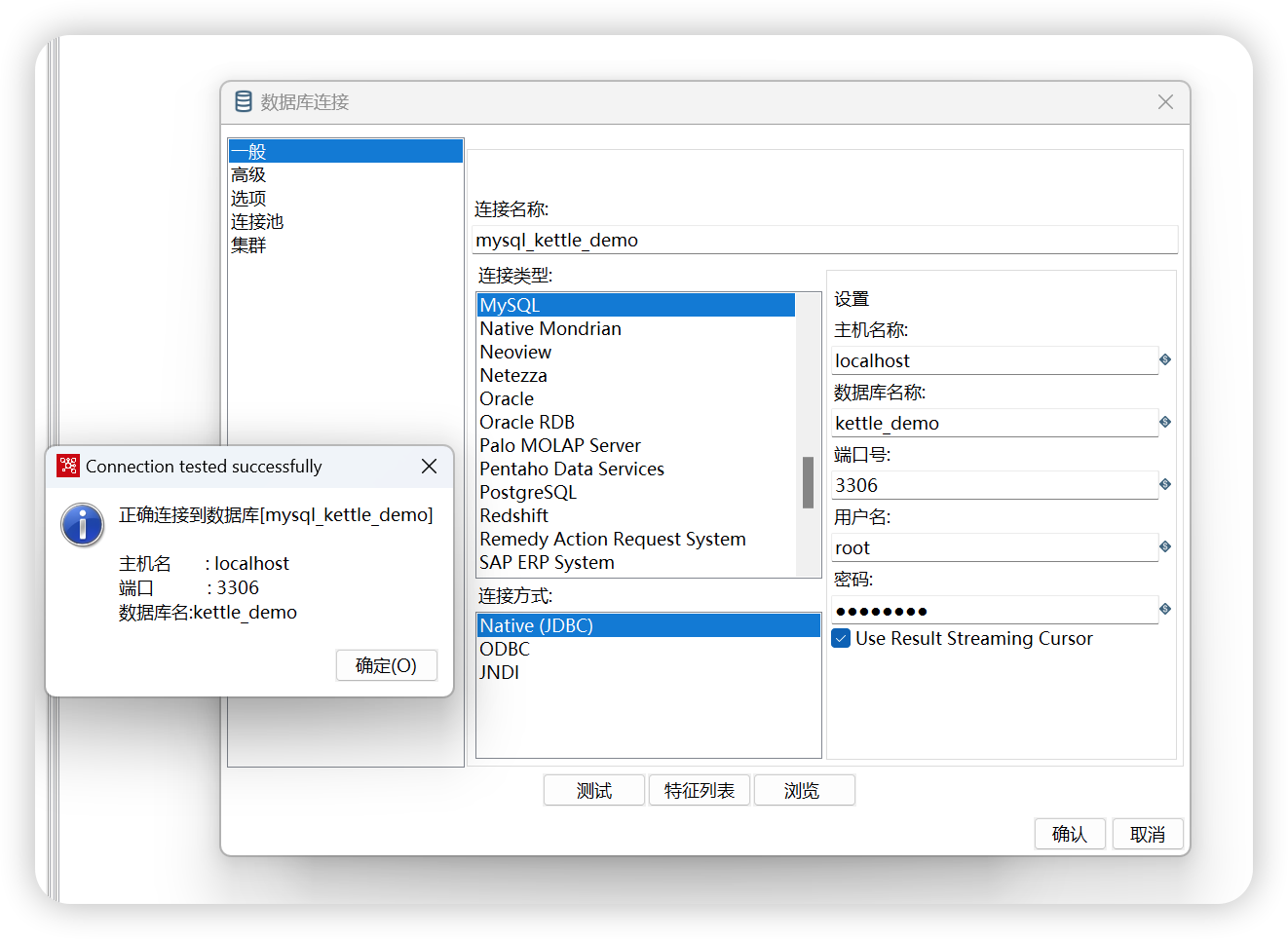Windows11[虚拟机] Kettle 通过SSH隧道 连接远程[Mac] Mysql数据库
Kettle无法直接连接使用SSH通道的MySQL,需要通过SSH隧道(推荐),具体操作如下所示:
一、搭建Xshell SSH 隧道转发
1、点击“连接”
借助Xshell7,首先创建会话mac(名字随便写),右键-->属性,在弹出窗口中填写名称(随便写),填写主机:SSH隧道的ip地
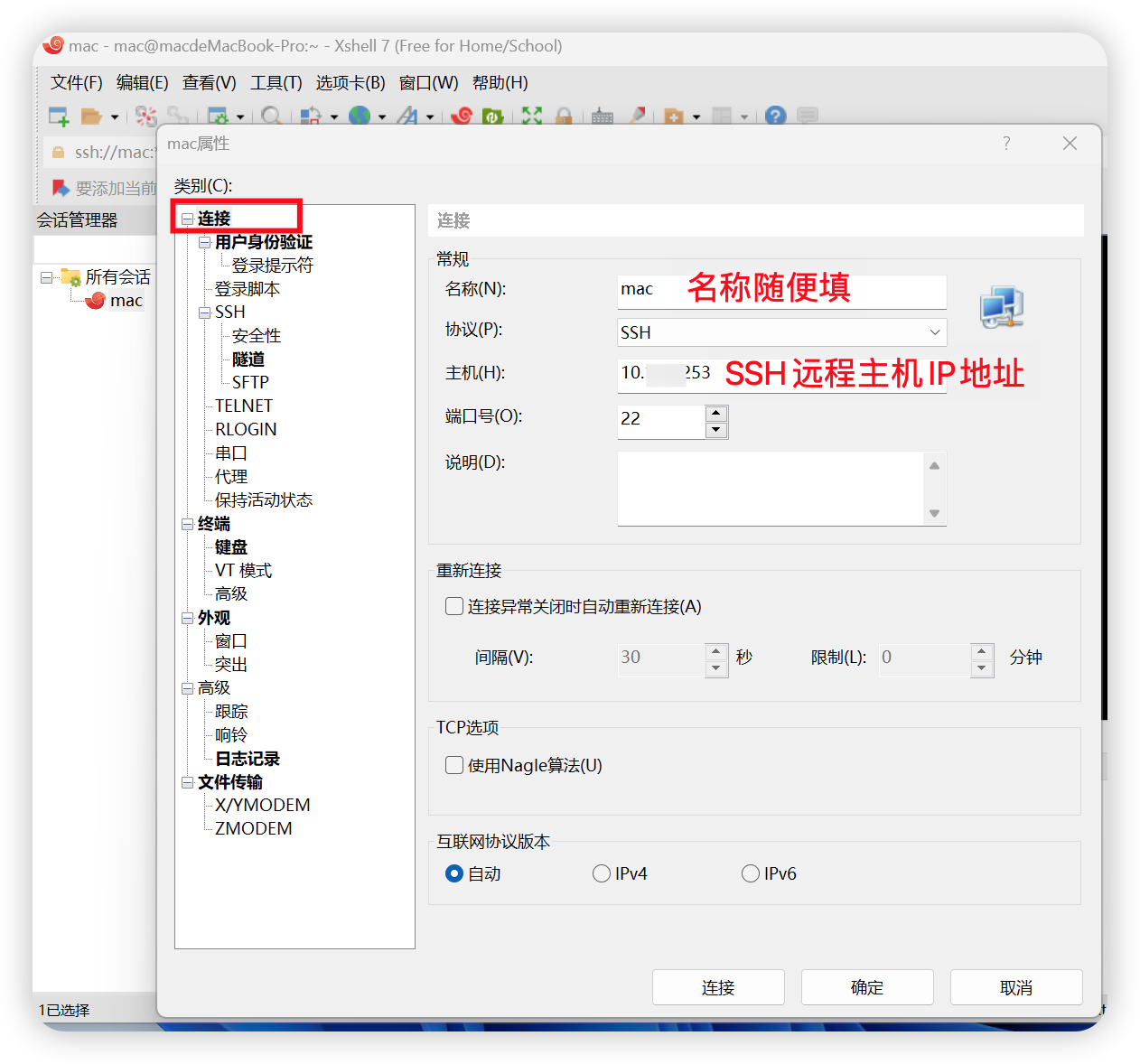
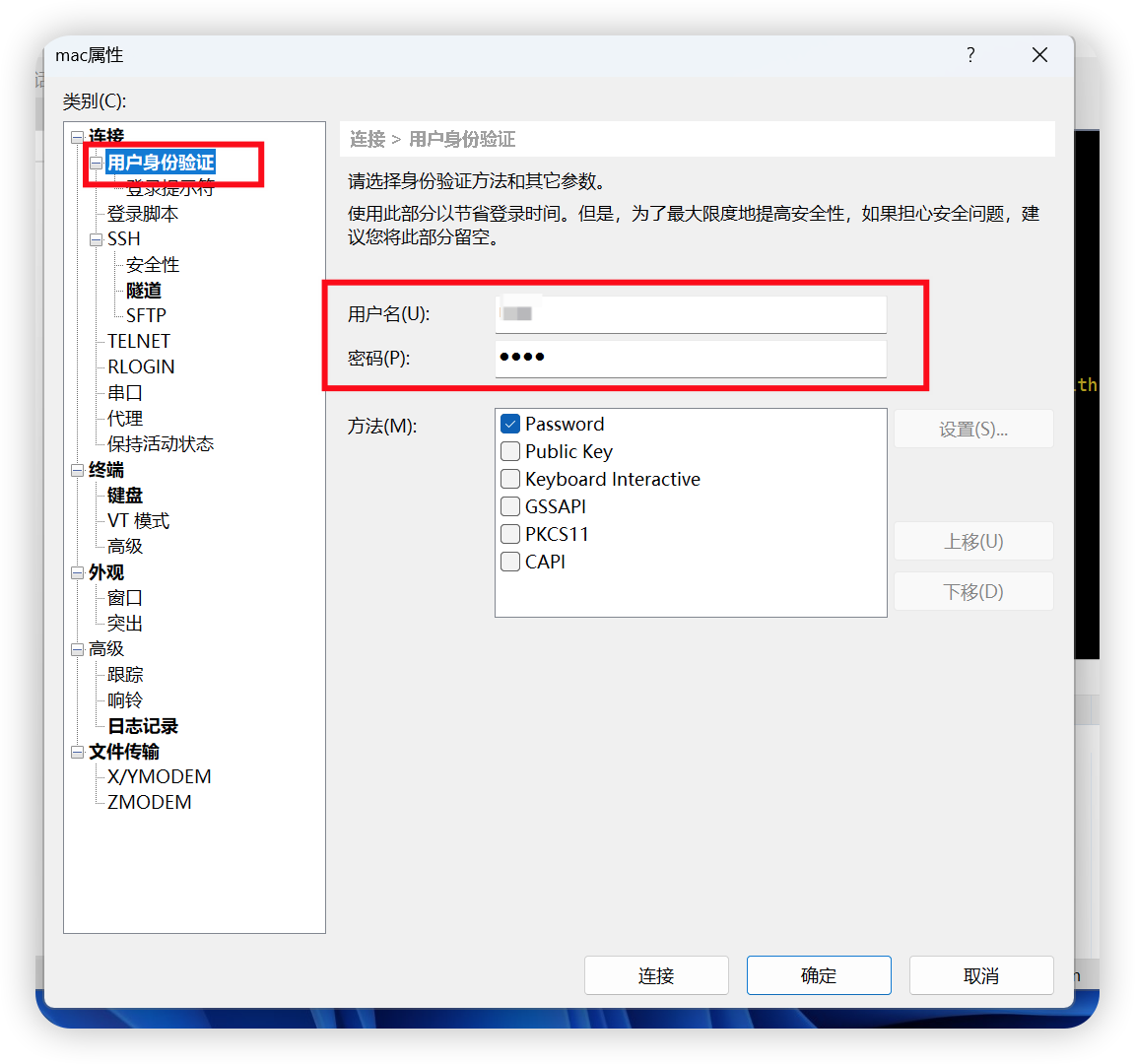
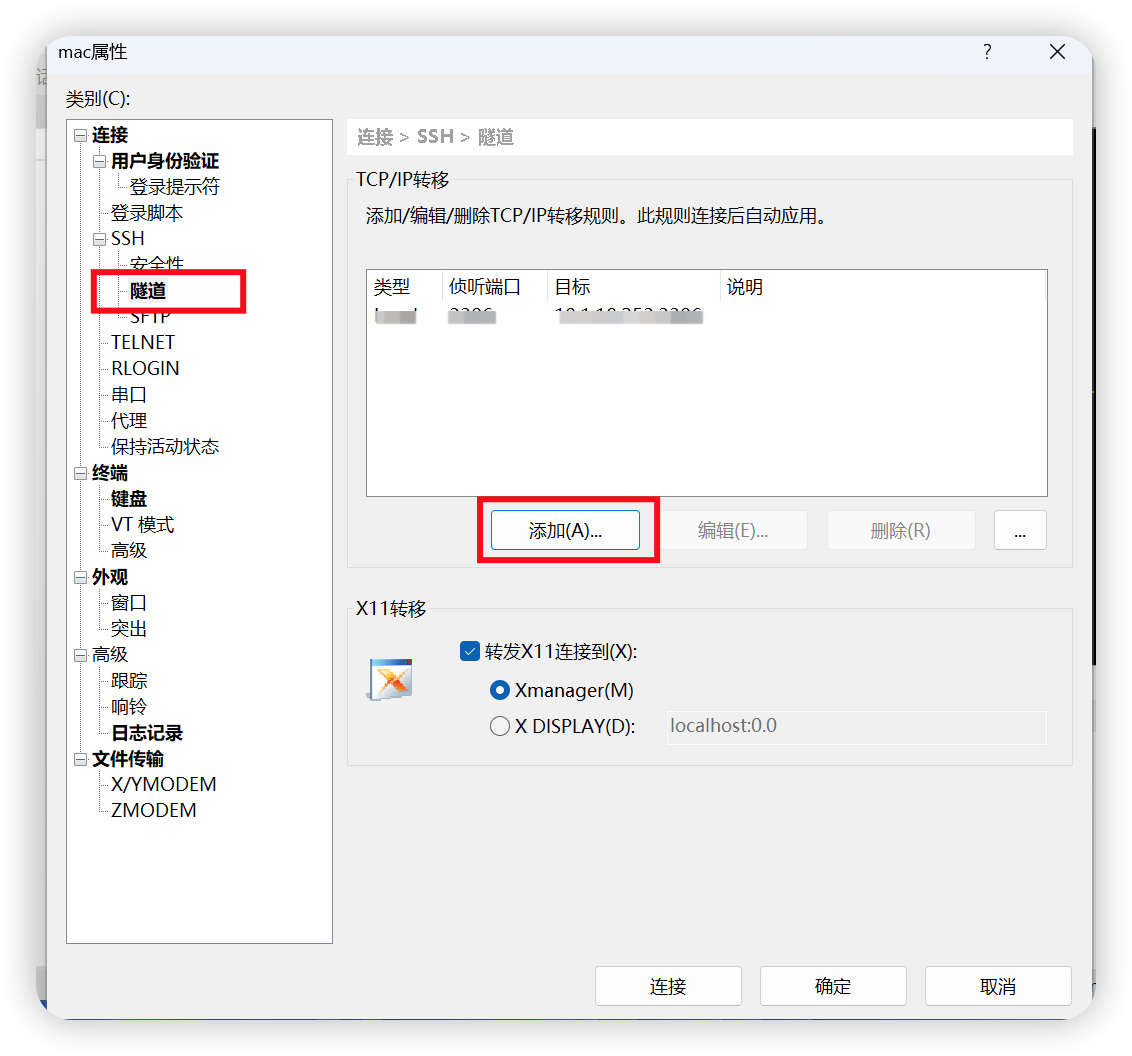
点击“添加”按钮出现如下,填写源主机:localhost(一般填写localhost), 侦听端口:XXX(端口随便写,但是一定要记住,用于kettle连接数据库) , 目标主机:数据库IP地址(远程主机的IP地址) , 目标端口:3306(mysql开放的端口)
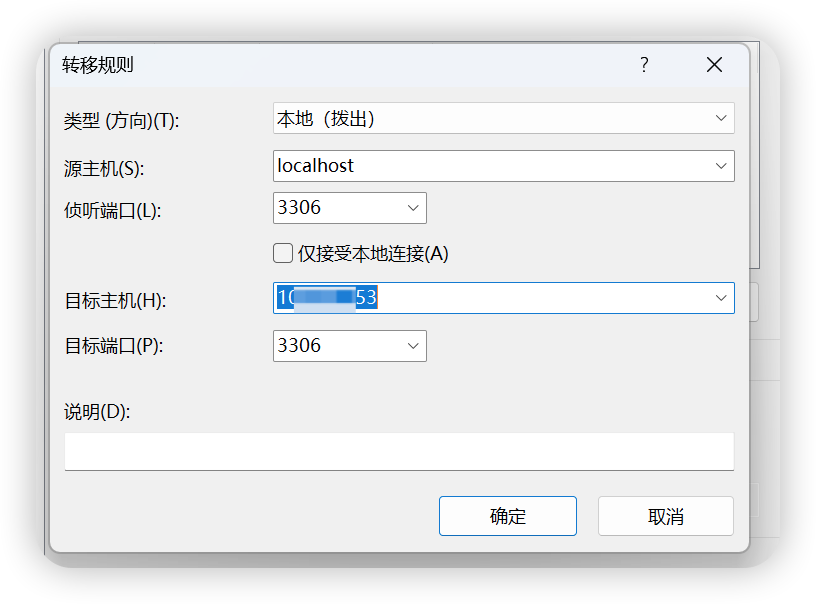
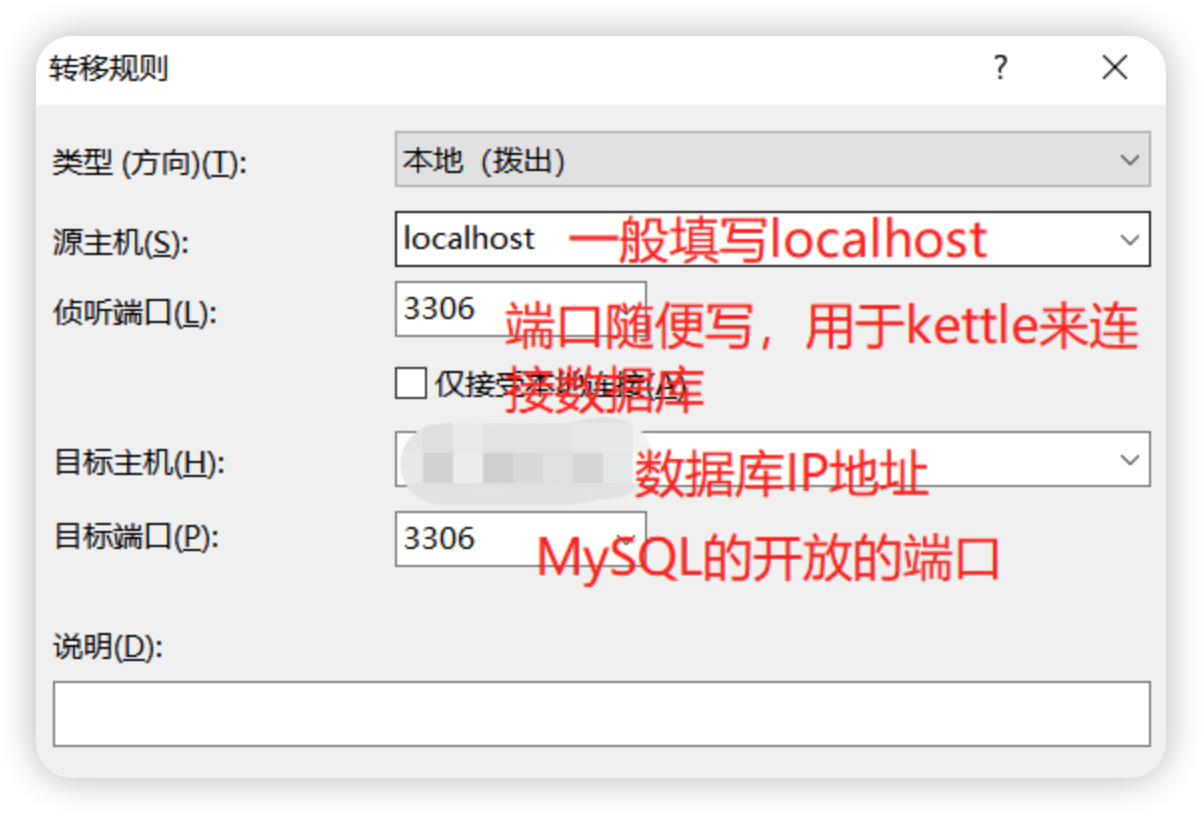
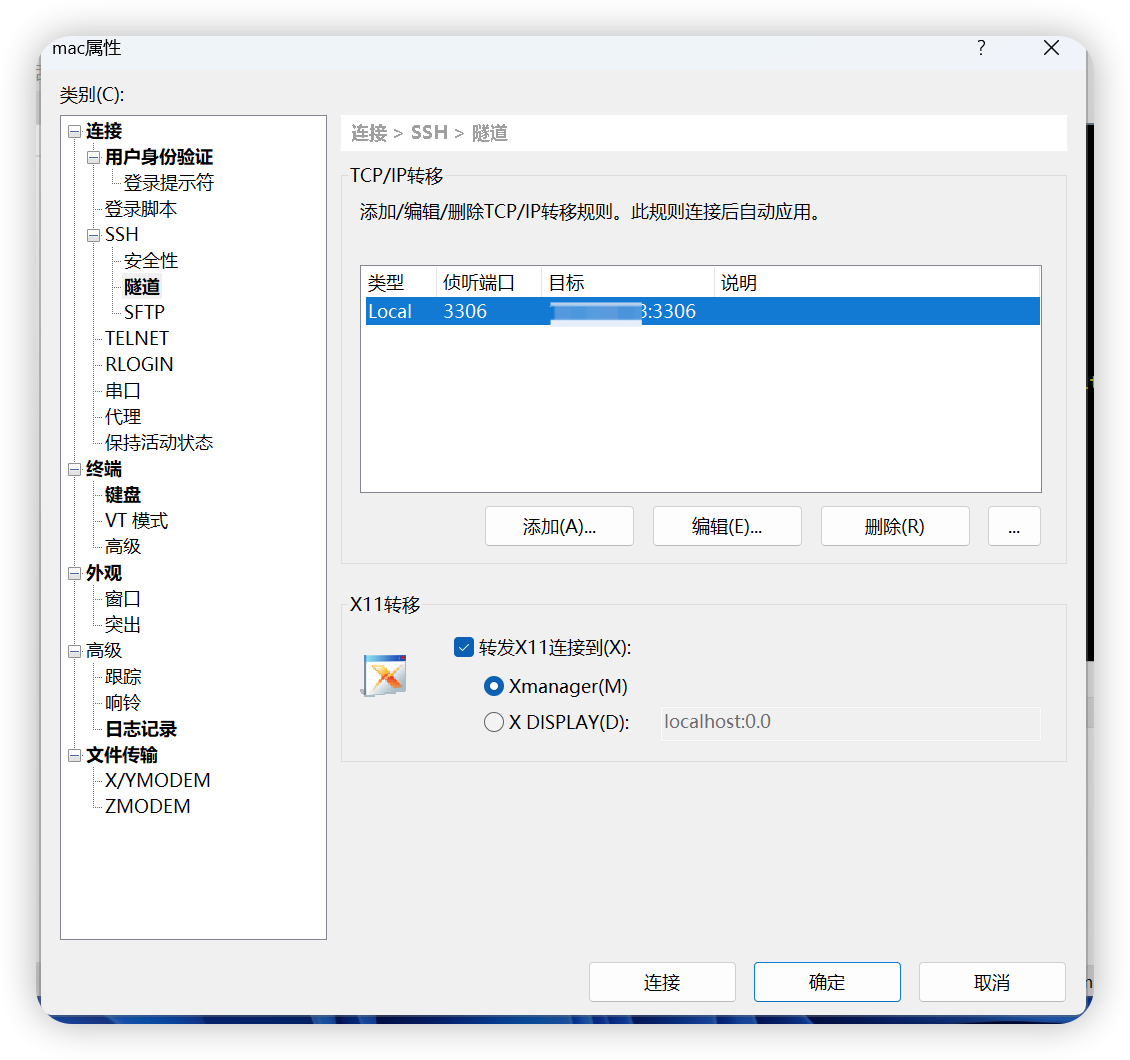
点击连接,连接到远程服务器,在Xshell下方的"隧道窗格"中,将看到我们配置的转发规则,如下

注意看规则的第一行转发配置,确保状态是打开,如果显示的是失败可能是3306这个本地端口已经被占用了,可以尝试将侦听端口修改为其它端口进行重新设置。
二、检查远程服务器MySql文件配置
1、netstat -anp tcp | grep 3306

注意地方,这说明3306被绑定到了本地。检查一下my.cnf的配置,这里可以配置绑定ip地址。
cd /usr/local/etc
找到my.cnf文件,修改如下:bind-address=0.0.0.0
不配置或者IP配置为0.0.0.0,表示监听所有客户端连接。
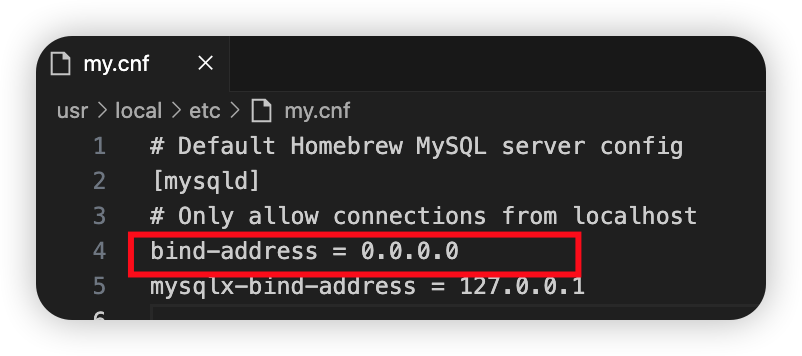

三、开启SSH远程转发功能
SSH默认不允许远程转发
# $OpenBSD: sshd_config,v 1.103 2018/04/09 20:41:22 tj Exp $ # This is the sshd server system-wide configuration file. See # sshd_config(5) for more information. # This sshd was compiled with PATH=/usr/bin:/bin:/usr/sbin:/sbin # The strategy used for options in the default sshd_config shipped with # OpenSSH is to specify options with their default value where # possible, but leave them commented. Uncommented options override the # default value. # This Include directive is not part of the default sshd_config shipped with # OpenSSH. Options set in the included configuration files generally override # those that follow. The defaults only apply to options that have not been # explicitly set. Options that appear multiple times keep the first value set, # unless they are a multivalue option such as HostKey. Include /etc/ssh/sshd_config.d/* #Port 22 #AddressFamily any #ListenAddress 0.0.0.0 #ListenAddress :: HostKey /etc/ssh/ssh_host_rsa_key HostKey /etc/ssh/ssh_host_ecdsa_key HostKey /etc/ssh/ssh_host_ed25519_key # Ciphers and keying #RekeyLimit default none # Logging #SyslogFacility AUTH #LogLevel INFO # Authentication: #LoginGraceTime 2m #PermitRootLogin prohibit-password #StrictModes yes #MaxAuthTries 6 #MaxSessions 10 #PubkeyAuthentication yes # The default is to check both .ssh/authorized_keys and .ssh/authorized_keys2 # but this is overridden so installations will only check .ssh/authorized_keys AuthorizedKeysFile .ssh/authorized_keys #AuthorizedPrincipalsFile none #AuthorizedKeysCommand none #AuthorizedKeysCommandUser nobody # For this to work you will also need host keys in /etc/ssh/ssh_known_hosts #HostbasedAuthentication no # Change to yes if you don't trust ~/.ssh/known_hosts for # HostbasedAuthentication #IgnoreUserKnownHosts no # Don't read the user's ~/.rhosts and ~/.shosts files #IgnoreRhosts yes # To disable tunneled clear text passwords, change to no here! PasswordAuthentication yes #PermitEmptyPasswords no # Change to no to disable s/key passwords #ChallengeResponseAuthentication yes # Kerberos options #KerberosAuthentication no #KerberosOrLocalPasswd yes #KerberosTicketCleanup yes #KerberosGetAFSToken no # GSSAPI options GSSAPIAuthentication yes GSSAPICleanupCredentials no # Set this to 'yes' to enable PAM authentication, account processing, # and session processing. If this is enabled, PAM authentication will # be allowed through the ChallengeResponseAuthentication and # PasswordAuthentication. Depending on your PAM configuration, # PAM authentication via ChallengeResponseAuthentication may bypass # the setting of "PermitRootLogin without-password". # If you just want the PAM account and session checks to run without # PAM authentication, then enable this but set PasswordAuthentication # and ChallengeResponseAuthentication to 'no'. #UsePAM no #AllowAgentForwarding yes #AllowTcpForwarding yes #GatewayPorts no X11Forwarding yes X11DisplayOffset 10 X11UseLocalhost yes #PermitTTY yes #PrintMotd yes #PrintLastLog yes #TCPKeepAlive yes #PermitUserEnvironment no #Compression delayed #ClientAliveInterval 0 #ClientAliveCountMax 3 #UseDNS no #PidFile /var/run/sshd.pid #MaxStartups 10:30:100 #PermitTunnel no #ChrootDirectory none #VersionAddendum none # no default banner path #Banner none # override default of no subsystems #Subsystem sftp /usr/libexec/sftp-server # Example of overriding settings on a per-user basis #Match User anoncvs # X11Forwarding no # AllowTcpForwarding no # PermitTTY no # ForceCommand cvs server # XAuthLocation added by XQuartz (https://www.xquartz.org) XAuthLocation /opt/X11/bin/xauth
四、在本地测试远程连接
打开终端
1、ping 远程ip,如果可以ping通,代表主机可以正常连接。
2、telnet ip地址 端口号

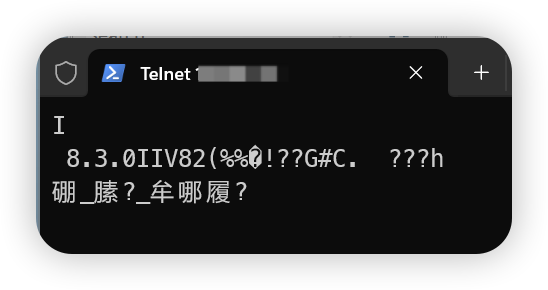
以上代表成功。
telnet 主机3306端口不可以;
telnet 主机22端口可以;
说明与本机网络没有关系;
端口检测
1)netstat -ntpl |grep 3306
tcp 0 0 :::3306 :::* LISTEN -
2)netstat -ntpl |grep 22
tcp 0 0 0.0.0.0:22 0.0.0.0:* LISTEN -
可以看出22端口监听所有地址,而3306只监听本机地址(绑定了到了本地),所以远程无法访问。
对于端口只允许本机访问,有两个地方启用,一个是防火墙启用3306,一个就是mysql配置绑定本机地址。
五、kettle使用SSH隧道建立数据库连接
在连接mysql之前需要将连接mysql的工具放入kettle的lib目录中
